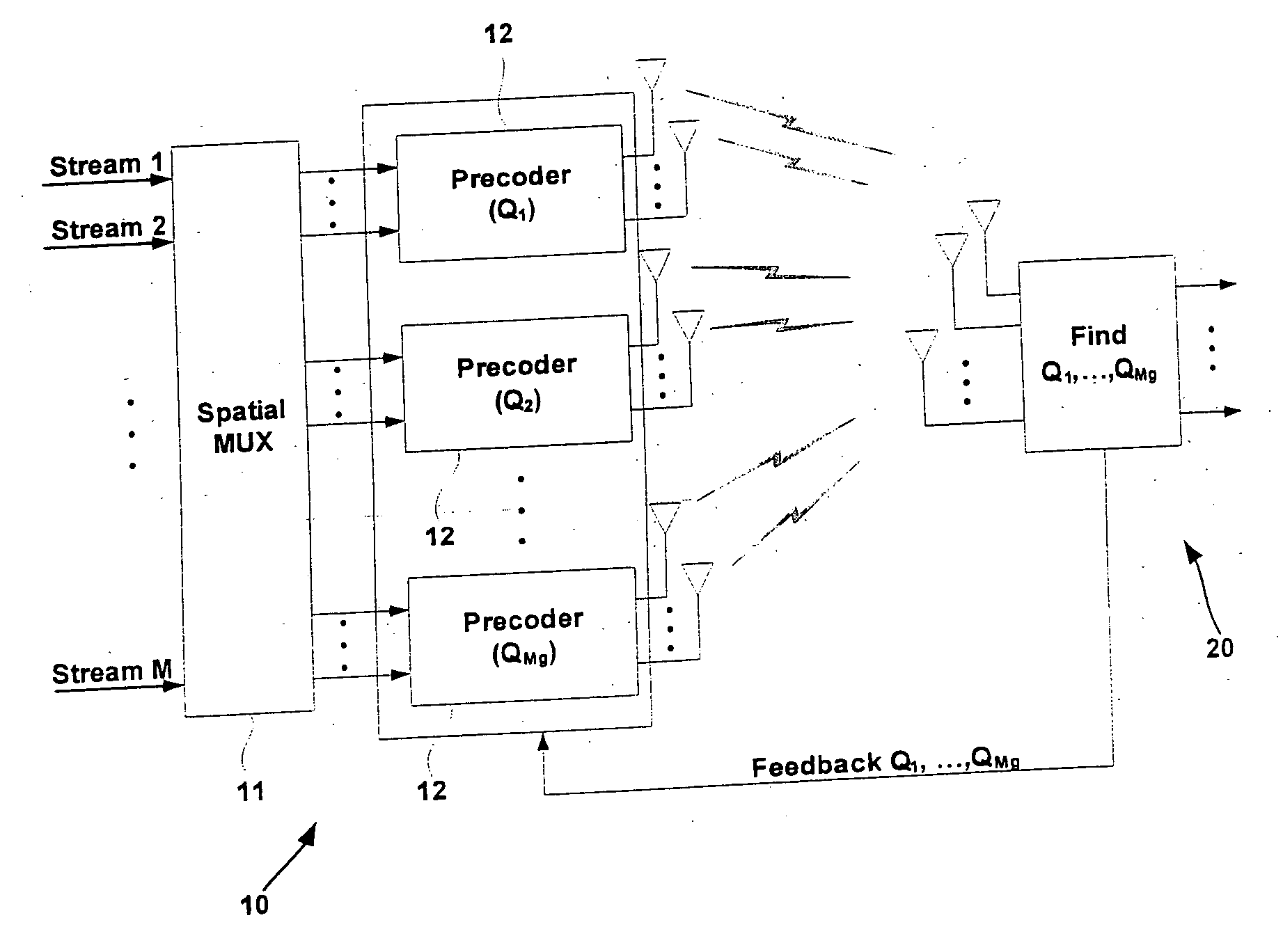Beam and power allocation method for MIMO communication system
a communication system and beam beam technology, applied in the field of wireless communication systems, can solve the problems of computational complexity, large feedback information and computational complexity of svd-based closed-loop mimo schemes, and limitations in adapting various other mimo systems
- Summary
- Abstract
- Description
- Claims
- Application Information
AI Technical Summary
Benefits of technology
Problems solved by technology
Method used
Image
Examples
Embodiment Construction
[0018] Preferred embodiments of the present invention will be described in detail hereinafter with reference to the accompanying drawings. In the following description of the present invention, a detailed description of known functions and configurations incorporated herein will be omitted when it may obscure the subject matter of the present invention.
[0019]FIG. 1 is a block diagram of MIMO system adapting the power allocation method of the present invention.
[0020] As shown in FIG. 1, the MIMO system includes a base station 10 having N transmit antennas and a mobile terminal 20 having M receive antennas. The transmitter 10 includes a spatial multiplexer 11 which spatially multiplexes M input streams and outputs grouped streams and Mg precoders 12 each of which performs precoding of respective streams groups and then transmits the precoded streams. The mobile terminal 20 receives signals through at least two receive antennas and estimates the channels and generates covariance matr...
PUM
 Login to View More
Login to View More Abstract
Description
Claims
Application Information
 Login to View More
Login to View More - R&D
- Intellectual Property
- Life Sciences
- Materials
- Tech Scout
- Unparalleled Data Quality
- Higher Quality Content
- 60% Fewer Hallucinations
Browse by: Latest US Patents, China's latest patents, Technical Efficacy Thesaurus, Application Domain, Technology Topic, Popular Technical Reports.
© 2025 PatSnap. All rights reserved.Legal|Privacy policy|Modern Slavery Act Transparency Statement|Sitemap|About US| Contact US: help@patsnap.com



